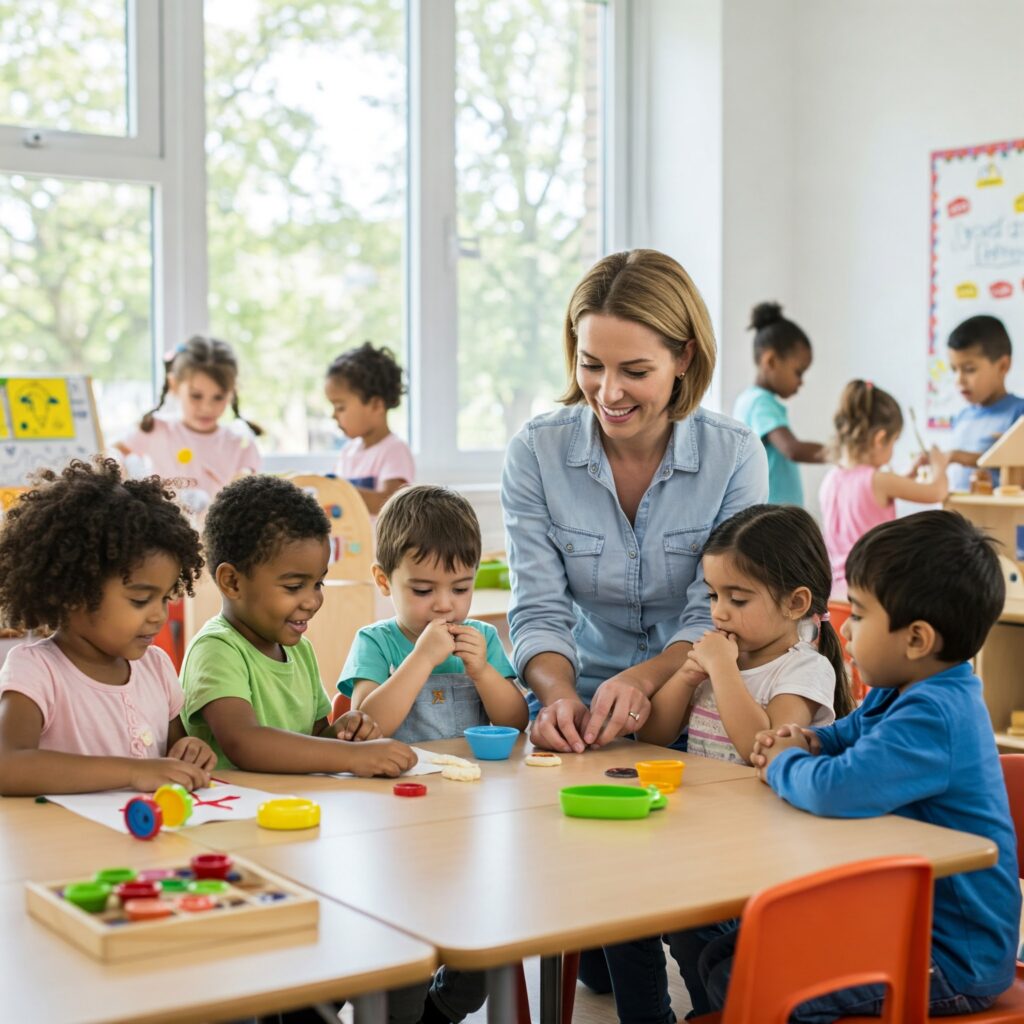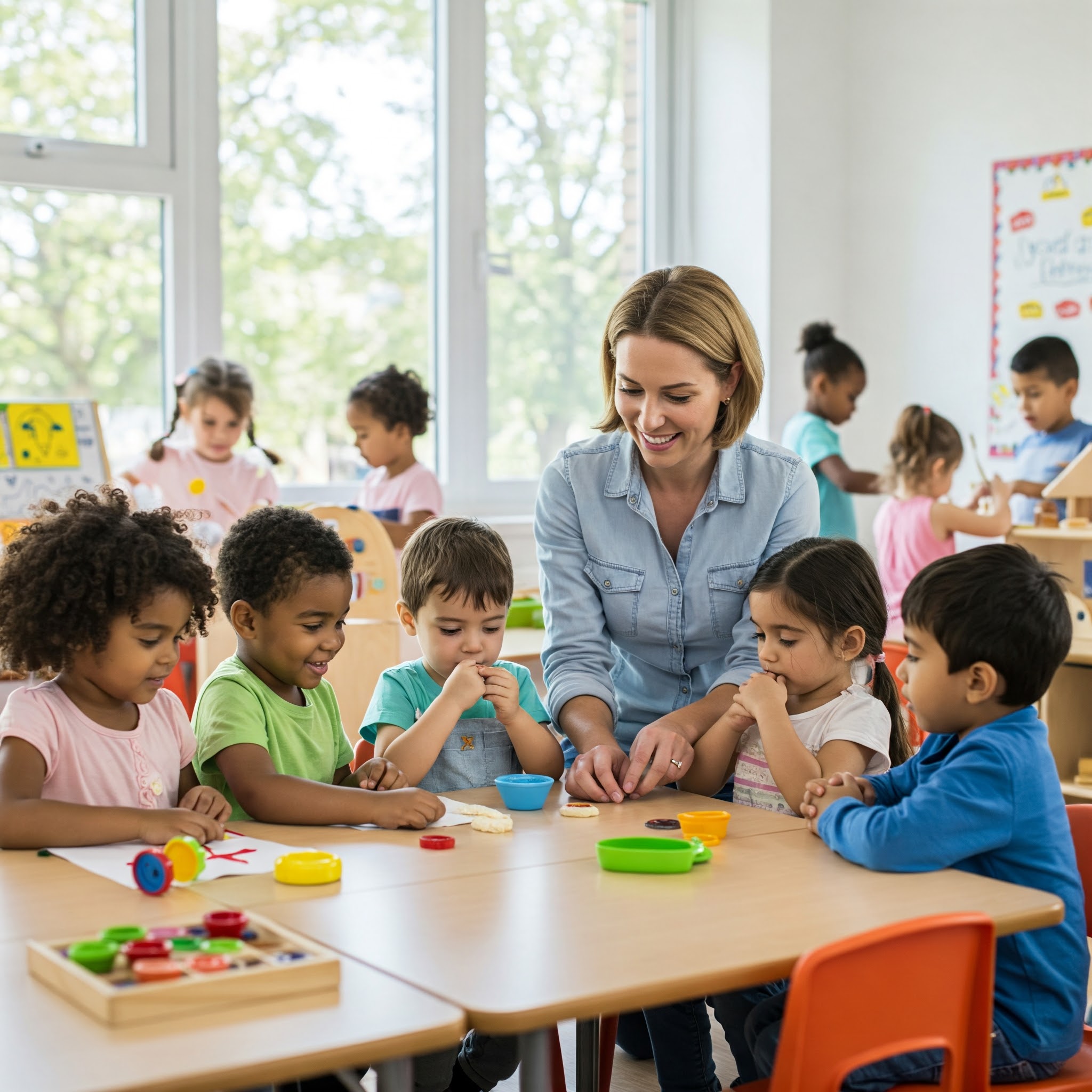THE HOLISTIC DEVELOPMENT OF A CHILD: A TRIPLE THREAT OF ACADEMICALS, LIFE SKILLS AND WEANING IN 21st CENTURY
The 21st century education is going through a revolution. A more balanced, integrated, and human-centric model is taking its place—holistic education—serving as a gradual challenge to the conventional focus on academic performance alone. This approach focuses on, not only academic transmission but also practical, hands-on skills and the well-being of the mind.

Today, students, educators, and parents are knocking their heads against a wall with the pressures of high-speed lifestyles, digital distractions, and performance based on the expectations of society which demands a holistic framework more than ever. In this article we will look at what holistic education actually means, and why it is critical for the modern world, we will also look at how to practically apply it, and the future that it opens up.
WHAT IS HOLISTIC EDUCATION?
Holistic education is an approach that attends to the mind, body and spirit of students so that their intellectual, emotional, social, physical, creative and spiritual potentials can thrive. It emphasizes well-rounded development over academic performance, and it encourages its students to become critical thinkers, collaborative learners, empathetic listeners, and resilient innovators.
The Five Key Pillars of Holistic Education:
Traditional Book Learning — Foundation in traditional subjects like math, science, literature.
Skill Development – Life skills, digital literacy, communication, creativity.
Mental and Emotional Health – Mindfulness, emotional intelligence, systematics of stress.
Character Development – Ethics, values, empathy, and self-awareness.
Physical wellness — Nutrition, sports, exercise, sleep hygiene
WHY HOLISTIC EDUCATION IS THE NEED OF THE HOUR
Rising Mental Health Issues
As per the WHO, one in seven adolescents (10–19) experiences mental health conditions.
Academic stress, social media, and lack of emotional support are key factors.
They will need more than academics for the Future Workplaces
Soft skills, such as working with others, adjusting to change, and thinking through problems, are more valuable to employers.
Routine tasks are being taken over; roles that need people are growing.
Unsubscribed and Uninterested
Disenfranchisement from education is common among students due to lack of relevance and intrigue.
Holistic methods add engagement and relevance to learning.
Global Education Reforms
Policies such as India’s NEP 2020, Finland’s flexible learning, and OECD’s Education 2030 emphasise holistic development.
Expectations of Parents and Students Have Evolved
It highlights a need for education systems that support holistic development, not purely grades.
DIVERSITY. SHARING EXPERIENCES. ROLE MODELS
ACADEMIC EXCELLENCE
Academic rigor is still essential even as holistic education broadens the focus. But the difference is in the approach to academics:
Think in terms of Project-Based Learning versus rote memorization.
Interdisciplinary Learning to help link what we learn in the classroom to issues in the world.
Second is Critical Thinking and Inquiry-Based Learning.
SKILL DEVELOPMENT
Text book knowledge is just one part of training.
Communications: Written, verbal, digital.
Collaboration: Teamwork, leadership.
Creativity: The arts, music, innovation challenges.
Digital Literacy: Coding, safety in the web, content creation.
Personality Development: Skills development, Resume Writing, Interview preparation.
MENTAL AND EMOTIONAL WELL-BEING
The truth is anxiety, depression and burnout confront students today.
Mindfulness Practices: Meditation, breathing exercises, journaling.
THIS IS HOW YOU TRAIN STAYING STRONG THROUGH THE UPS AND DOWNS OF LIFE AI!
Counseling Services: Students in distress.
Safe Spaces: Place where students feel respected and heard.
CHARACTER BUILDING
The duration of the education phase*
Moral Education: Right Vs Wrong.
Civic Responsibility: Know your rights and responsibilities.
Empathy and Compassion: Activities that promote kindness and inclusiveness.
Skills: The ability to manage a variety of skills.
PHYSICAL WELLNESS
A healthy body leads to a healthy mind.
Regular Exercise: All sports, yoga, dance.«
Training on Healthy Diet and Lifestyle: Nutrition Education.
Educating students on sleep hygiene:
Technology Time-Out: Urging screen and gadget-free time.
HOLISTIC EDUCATION: HOW SCHOOLS AND COLLEGES CAN IMPLEMENT
CURRICULUM DESIGN
Incorporate modules on life skills, arts, and well-being.
Utilize experiential and service-based learning.
Build flexibility into the curriculum to follow student interest.
TEACHER TRAINING
Provide educators tools to know and support mental health
Model facilitation instead of lecturing.
Encourage interdisciplinary instruction.
ASSESSMENT TECHNIQUES
Step away from grading to portfolio assessments, presentations and peer-reviewing.
Report cards should include behavioral and emotional development.
INFRASTRUCTURE AND RESOURCES
Meditation, counseling and recreation areas.
Interactive learning using smart utility and digital gadgets.
PARENTS ENGAGED IN THE ATTENDING COMMUNITY
Parental workshops on emotional intelligence & digital parenting
Community learning volunteer programs
SUCCESSES ON THE MODEL OF HOLISTIC EDUCATION
FINLAND
Concentrates on happiness, life skills, and student growth from where they started.
No standardized testing before high school.
MONTESSORI & WALDORF SCHOOLS
Focus on hands-on, child-centric, and values-driven education.
Key: Creativity, exploration and natural development.
INTERNATIONAL BACCALAUREATE (IB)
Emphasizes inquiry-based learning, global citizenship, and reflection.
Theory of Knowledge (TOK) and Creativity-Activity-Service (CAS) components.
KEN ROBINSON’S PHILOSOPHY
Argued for personal education that encourages creativity.
Education must be organic, not mechanical.
Technology in Education: Role of Technology in Holistic Education
EdTech Tools
Platforms such as Khan Academy, Byju’s, Coursera combine academics with skill-building.
AI Tutors and Chatbots
Personalized learning paths & immediate feedback
Gamification
Apps such as Duolingo and Prodigy help give your kids an enjoyable learning experience.
Digital Art and Media Labs
This will inspire creativity using video, music, and graphic design.
Wellness Apps
Apps like Headspace and Calm became part of the school day.
PROBLEMS IN IMPLEMENTING HOLISTIC EDUCATION
Systemic Resistance
Marks are prioritized over development in exam based education systems.
Resource Constraints
Moreover, public schools often do not have resources for additional programs and staff.
Overburdened Teachers
Holistic expectations without grounding can be crushing for educators.
Attitudes Related to Culture and Parenting
Some families view success solely in terms of high marks.
Assessment Dilemmas
How do we consistently measure empathy or creativity?
THE WAY FORWARD FOR HOLISTIC EDUCATION
Policy Shifts
SEL: A 2020 Policy Trend Govts AreWarming Up To
Global Competence: One of the Foundational Skills
It is necessary to comprehend diversity, climate change, and human rights.
Learning Ecosystems
Fostering a seamless integration of home, school, and community as learning environments.
Focus on Purpose and Meaning
In the future, education will aid students in discovering meaning — not merely a career.
Portfolio Projects – Inclusive & Adaptive Learning
Neurodiversity and special needs will be supported holistically by systems.
A COMPREHENSIVE VIEW OF EDUCATION IN INDIA
NEP 2020 Reforms
Emphasis on 5+3+3+4 model.
Emphasis on basic literacy, critical thinking, vocational exposure and mother tongue instruction.
New Assessment Models
Parakh and Board exam reforms to test competencies, not rote memory
Rise of Alternative Schools
Institutions such as Rishi Valley School, The Valley School (Bangalore) champion holistic methodologies.
Government Initiatives
Initiatives such as ‘Fit India Movement’, ‘School Health Programme’, ‘Yuva Scheme’.
NGO and EdTech Contributions
There are various organisations like Teach for India, Mindler and Manodarpan that work on the development and well-being of students.
CONCLUSION: TO A BALANCED FUTURE
Holistic education is not a luxury, rather it is a necessity. Amid burnout, disconnection and rigid systems, educating the whole child is a powerful antidote. It knows that each child is unique, that each mind learns differently, and that success is more than exams.
A holistic approach fosters intellectual, emotional and physical spheres to equip students for jobs—yes, but life too. It prepares them to be thoughtful leaders, empathetic citizens and resilient human beings. The process can be tough, but the results are remarkable.
Education is not simply filling minds but it is actually constructing lives. And holistic education is the road map for this fairer, balanced, beautiful future.
Also Read:- Ishwar Chandra Vidyasagar (1820-1891)) : Educator, Reformer, Visionary – The Inspiring Journey

